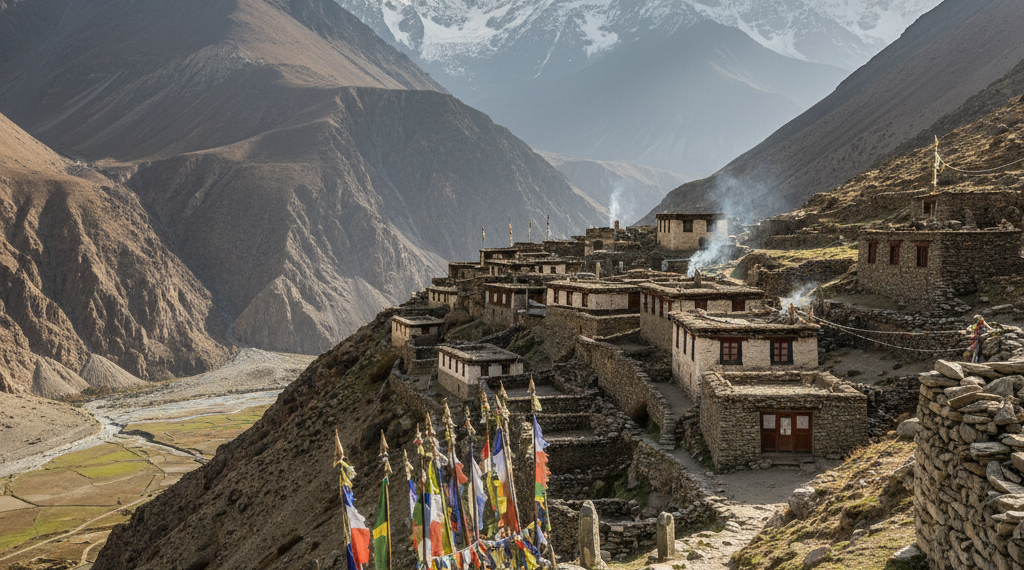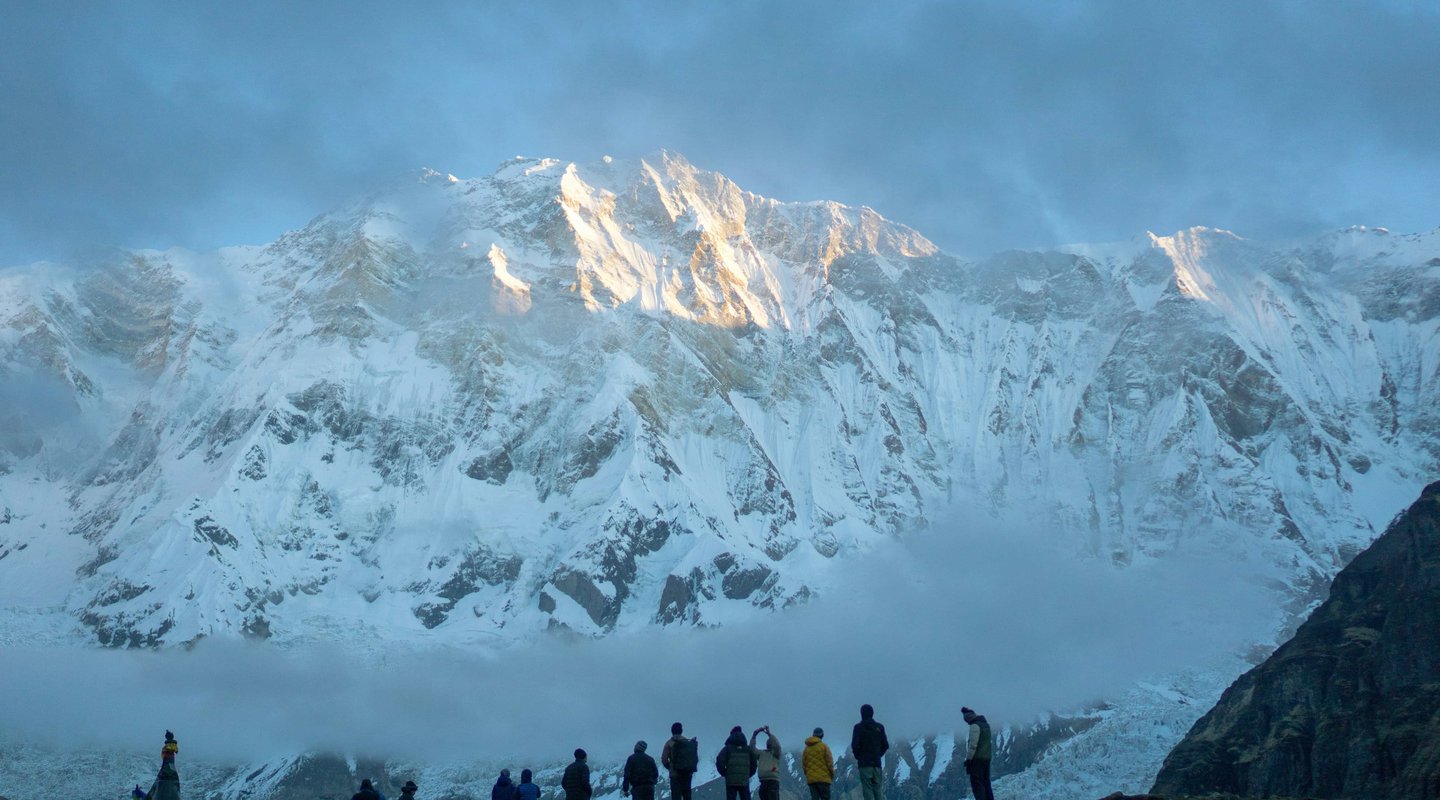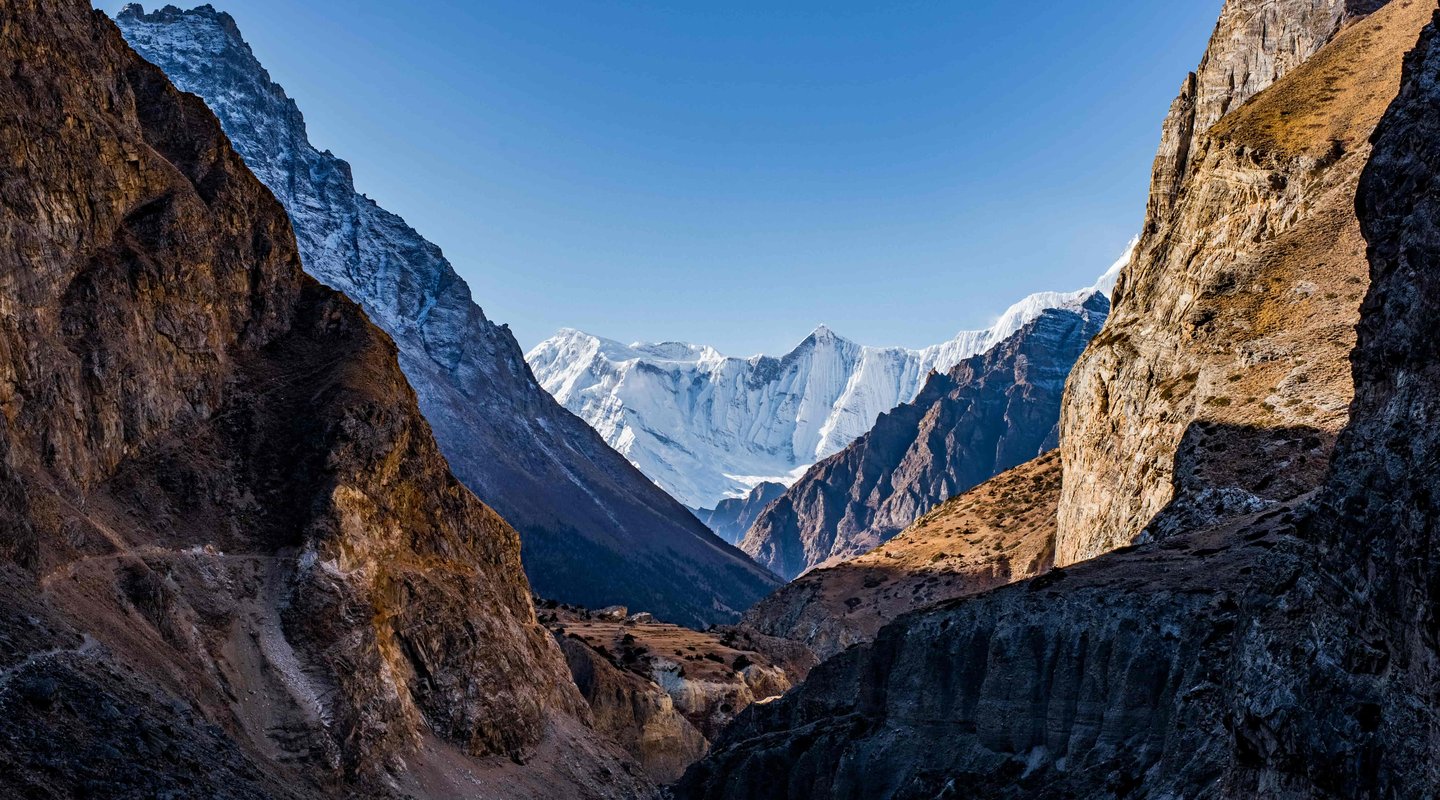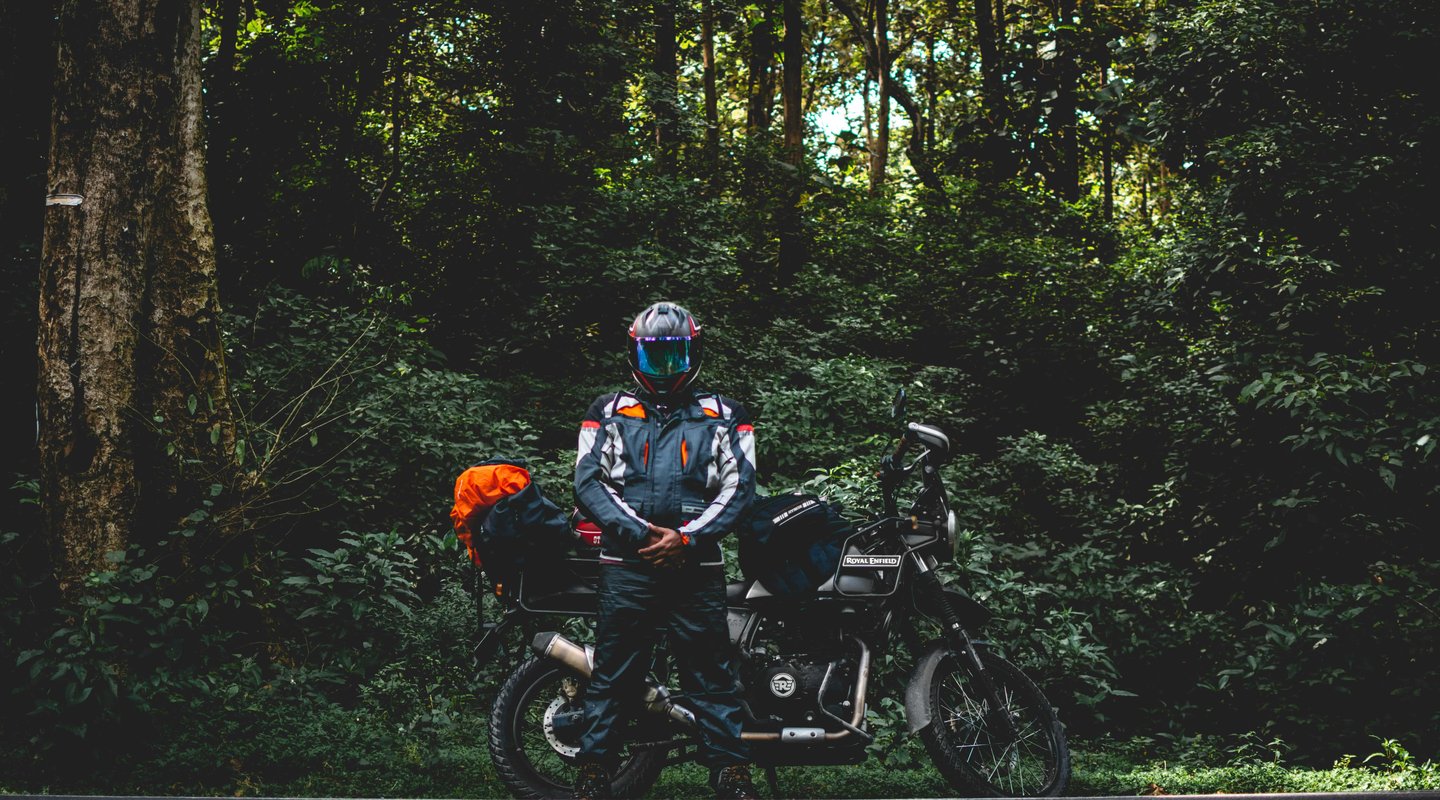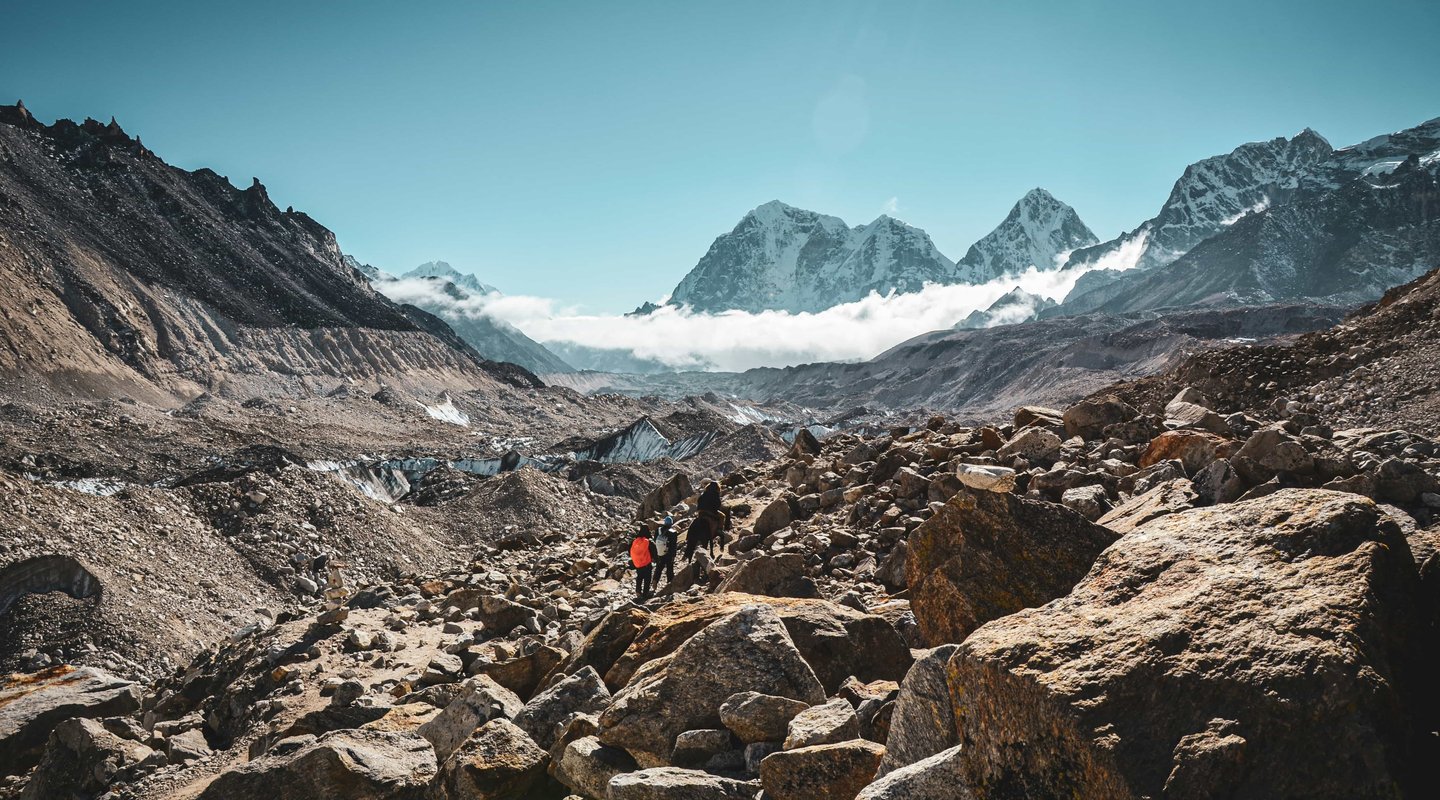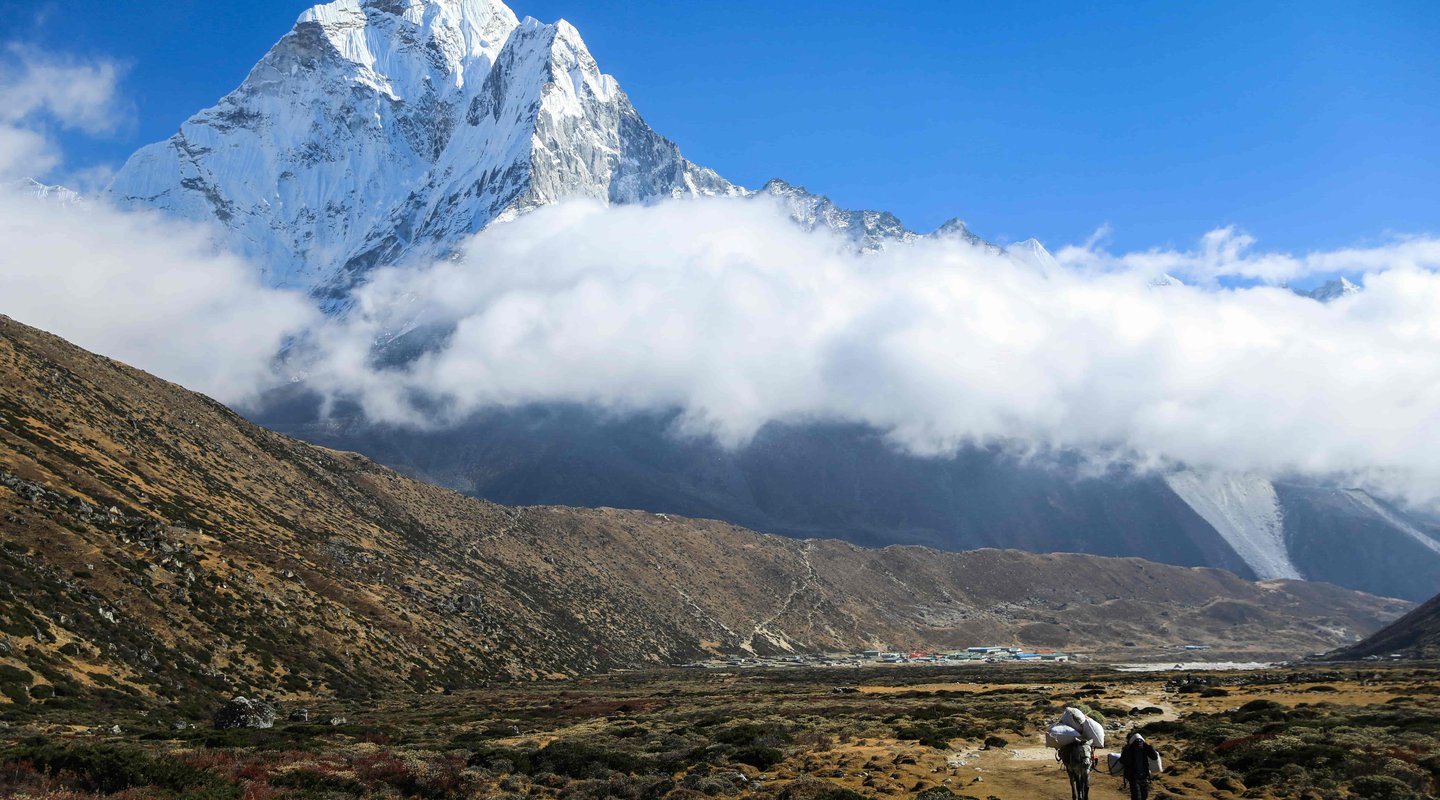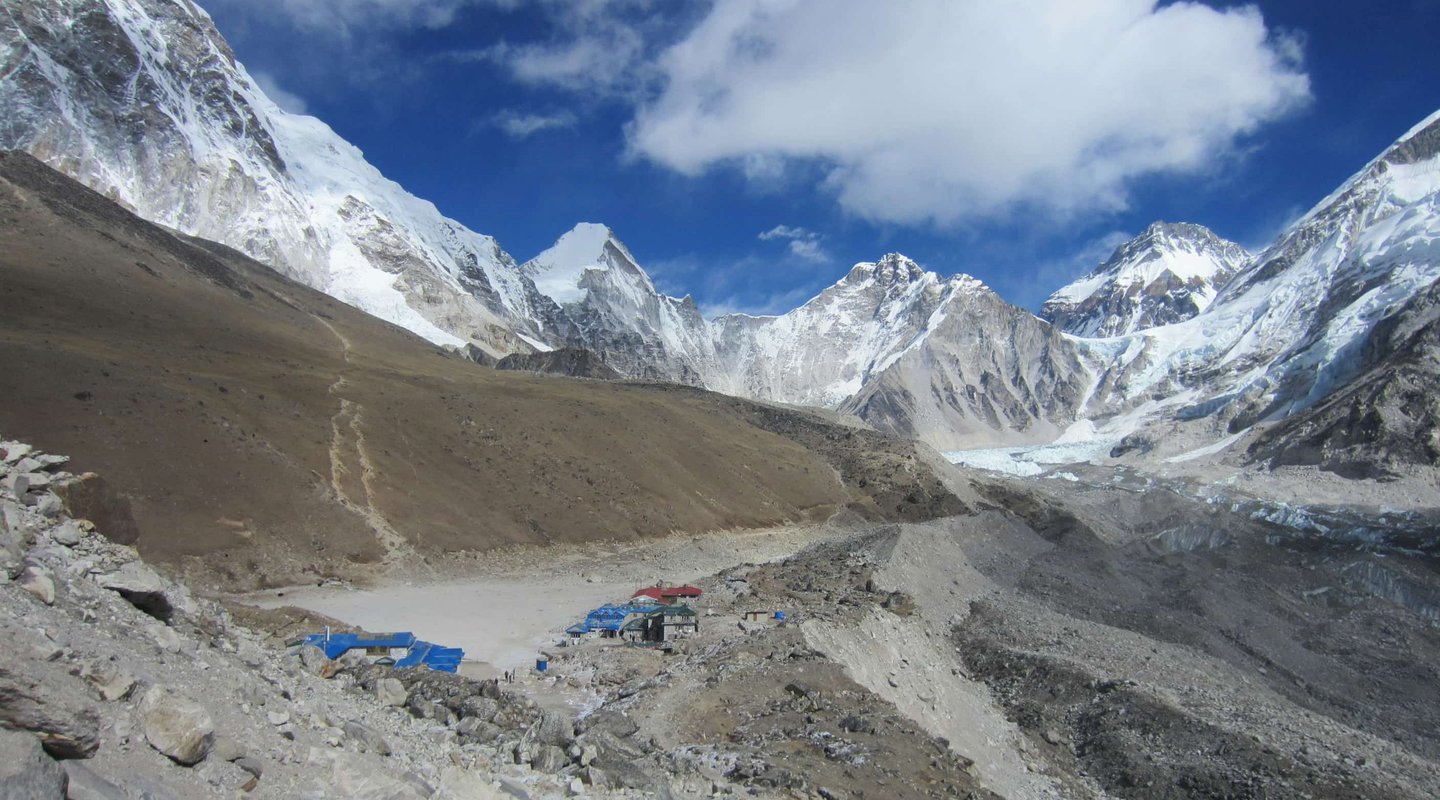Tucked away in the restricted regions of the Annapurna massif, the Nar Phu Valley Trek Itinerary offers an extraordinary journey through ancient Tibetan Buddhist monasteries, remote settlements frozen in time, and the challenging Kang La Pass at 5,322 meters. This comprehensive 12-day adventure combines the raw beauty of an off-the-beaten-path adventure with the cultural richness of villages that remained closed to outsiders until 2003.
Unlike the crowded trails of the main Annapurna Circuit connection, this trekking route takes you through landscapes where snow leopard habitat meets yarsagumba harvesting grounds, where mani stones and chortens mark ancient trading paths, and where sustainable trekking practices help preserve one of Nepal's last untouched valleys. Whether you're seeking Phu Village exploration, authentic Nar Village culture, or the thrill of crossing a high altitude pass, this ultimate guide provides everything you need for planning your journey into Nepal's hidden gem.
Complete 12-Day Nar Phu Valley Trek Day-by-Day Schedule
Day 1: Arrival in Kathmandu (1,300m)
Your Nar Phu adventure begins in Nepal's vibrant capital, where ancient temples meet modern chaos. After airport pickup, you'll settle into your hotel and attend a trek briefing covering the restricted area permit requirements and final gear check.
Essential first-day activities include:
- Visa processing if not obtained online
- Meeting your trekking guide and team
- Final equipment shopping in Thamel
- Rest and hydration to prepare for the journey
- Traditional welcome dinner with cultural show
Day 2: Kathmandu Sightseeing and Preparation (1,300m)
Before heading into the mountains, immerse yourself in Kathmandu's UNESCO World Heritage sites. This acclimatization schedule begins at sea level, allowing your body to adjust gradually while exploring Swayambhunath (Monkey Temple) and Boudhanath Stupa.
Pre-trek preparation checklist:
- Permit documentation finalization
- ATM visits for cash (no banks in remote areas)
- Battery charging for all devices
- Final packing and weight distribution
- Briefing on altitude sickness prevention strategies
Day 3: Drive to Koto via Besisahar (2,600m | 8-9 hours)
The Besisahar to Koto drive time follows the Marsyangdi River trail through changing landscapes. Starting early from Kathmandu, you'll witness the dramatic transformation from subtropical valleys to alpine forests as you enter the Annapurna Conservation Area.
Journey highlights and logistics:
- Scenic drive through Gorkha and Lamjung districts
- Lunch stop in Besisahar (760m)
- Switch to local jeep for rougher mountain roads
- First views of Manaslu and Annapurna ranges
- Overnight in basic teahouse accommodation in Koto
- Evening permit check at police checkpoint
Day 4: Trek Koto to Meta (3,560m | 6-7 hours | +960m)
The real trekking begins as you leave the main Annapurna trail behind. The Koto to Meta hiking route immediately showcases why this valley remained hidden for centuries, with narrow gorges and suspension bridges creating natural barriers.
Daily trek breakdown:
- Distance covered: 14 kilometers
- Terrain: Rocky paths, forest trails, river crossings
- Highlights: Soti Khola crossing, first Buddhist chortens
- Wildlife spotting: Blue sheep on cliff faces
- Cultural markers: Prayer wheels and mani walls
- Accommodation: Basic lodge with solar power only
Day 5: Trek Meta to Phu Gaon (4,080m | 6-7 hours | +520m)
Entering deeper into the restricted area, today's trail reveals dramatic landscape changes. The vegetation thins as you climb toward Phu Village, with ancient monasteries perched impossibly on cliff faces.
Trail characteristics:
- Gradual ascent with stunning valley views
- Passage through Chyaku village (3,740m)
- Ancient burial grounds and meditation caves
- First views of Himlung Himal Base Camp route
- Dramatic canyon narrows before Phu
- Arrival at one of Nepal's most isolated settlements
Day 6: Phu Gaon Acclimatization Day - Village Exploration (4,080m)
The Phu Gaon acclimatization day is crucial for altitude adjustment. This rest day offers incredible opportunities for Phu Village exploration, including visits to Tashi Lhakhang Gompa and interactions with the Gurung community heritage.
Acclimatization day activities:
- Morning hike to Himlung Himal Base Camp (4,920m)
- Visit to 900-year-old Tashi Lhakhang monastery
- Exploration of traditional stone houses
- Observation of yarsagumba harvesting preparations
- Photography of authentic village life
- Evening cultural exchange with locals
Daily Elevation Profile - First Half:
- Day 1: Kathmandu to Kathmandu - No elevation change, arrival day
- Day 2: Kathmandu sightseeing - Remain at 1,300m for initial adjustment
- Day 3: Kathmandu to Koto - Gain 1,300m via vehicle (180km drive)
- Day 4: Koto to Meta - Gain 960m over 14km trek
- Day 5: Meta to Phu Gaon - Gain 520m over 13km trek
- Day 6: Phu Gaon acclimatization - Day hike gaining/losing 840m over 12km
Day 7: Trek Phu to Nar Village (4,110m | 5-6 hours | +30m)
The journey between Nepal's two most remote villages traverses high altitude grazing grounds. The trail to Nar Village culture showcases the unique adaptation of communities living above 4,000 meters year-round.
Route description:
- Descent from Phu through ancient juniper forests
- Crossing of Mahendra Pul suspension bridge
- Steep climb through blue pine forests
- Passage through summer yak pastures
- Views of Pisang Peak and Kang Guru
- Arrival at Nar's medieval stone fortress village
Day 8: Exploration Day in Nar - Cultural Immersion (4,110m)
Dedicating a full day to Nar Village culture provides insights into Tibetan Buddhist monasteries and traditions unchanged for centuries. This strategic acclimatization before crossing Kang La Pass tomorrow is essential.
Cultural immersion experiences:
- Morning prayers at Prakar Gompa
- Traditional weaving demonstrations
- Barley field and livestock management observation
- Interaction with village school children
- Photography of traditional architecture
- Preparation briefing for Kang La Pass crossing
Day 9: Cross Kang La Pass to Ngawal (5,322m to 3,660m | 7-8 hours | +1,212m/-1,662m)
The expedition's climax arrives with the Kang La Pass crossing. This high altitude pass demands early starts and steady pacing, rewarding climbers with panoramic views of the entire Annapurna range.
Kang La Pass descent to Ngawal details:
- 3:00 AM breakfast and 4:00 AM departure
- Steady climb through moraine and scree
- Prayer flag ceremony at pass summit (5,322m)
- 360-degree views including Annapurna II, III, IV, Gangapurna
- Careful descent on loose rocks requiring concentration
- Arrival in Ngawal joining the main Annapurna Circuit
Day 10: Trek Ngawal to Manang (3,540m | 4-5 hours | -120m)
Rejoining civilization in Manang feels surreal after the isolation of Nar Phu. This bustling mountain town offers hot showers, bakeries, and internet cafes - luxuries after your remote adventure.
Manang approach highlights:
- Optional upper route via Ghyaru for better views
- Visit to Hundred Rupee Lama at Braga Monastery
- Exploration of Gangapurna Lake
- Afternoon acclimatization walk around Manang
- Preparation for return journey
- Celebration dinner with apple pie
Day 11: Drive/Flight Return to Kathmandu (1,300m | 8-10 hours)
The return journey offers time for reflection on your incredible achievement. Whether choosing the scenic drive or optional flight from Manang (weather dependent), you'll carry memories of Nepal's hidden valleys.
Return logistics:
- Early morning departure from Manang
- Drive option: Via Besisahar with lunch stop
- Flight option: 20-minute scenic flight (USD 110)
- Afternoon arrival in Kathmandu
- Hot shower and city comforts
- Certificate presentation ceremony
Day 12: International Departure
Your Nar Phu Valley trek concludes with airport transfer, taking home memories of ancient monasteries, challenging passes, and cultures preserved in time.
Daily Elevation Profile - Second Half:
- Day 7: Phu Gaon to Nar Village - Gain 550m, lose 520m over 11km
- Day 8: Nar Village exploration - Gain/lose 200m over 6km cultural walks
- Day 9: Nar Village to Ngawal - Gain 1,212m to pass, lose 1,662m over 16km
- Day 10: Ngawal to Manang - Minor elevation change over 12km
- Day 11: Manang to Kathmandu - Descend 2,240m via vehicle (200km)
- Day 12: Kathmandu departure - International airport transfer
Difficulty Levels and Fitness Requirements for Nar Phu Valley
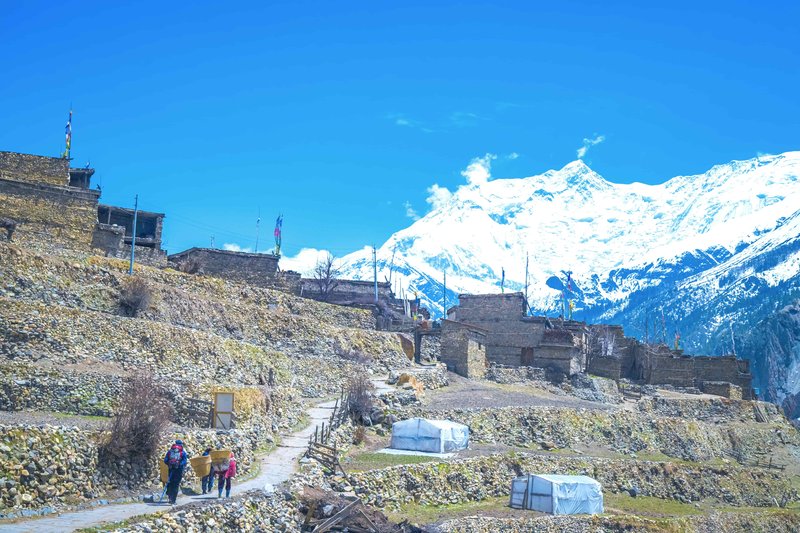
Understanding the Nar Phu Valley Trek Difficulty Rating
The moderate to challenging trek in Annapurna requires serious preparation. While not technically demanding like mountaineering expeditions, the combination of altitude, remote locations, and basic facilities creates unique challenges.
The fitness requirements for Kang La Pass include:
- Cardiovascular endurance for 6-8 hour daily hikes
- Leg strength for 1,200+ meter elevation gains
- Mental resilience for basic accommodation conditions
- Previous trekking experience above 3,000 meters recommended
- Ability to carry 5-7 kg daypack comfortably
- Flexibility to adapt to weather and trail conditions
Beginner Tips for Nar Phu Altitude Adaptation
First-time high-altitude trekkers need extra preparation. The terrain challenges on Nar Phu route include loose scree, narrow paths, and river crossings requiring sure footing.
Essential preparation strategies:
- Start training 3 months before departure
- Include hill walking or stair climbing in routine
- Practice with weighted backpack gradually
- Focus on stamina building for high passes
- Strengthen core muscles for balance
- Consider altitude training masks or hypoxic tents
Route Variations and Customizable Extensions
Popular Nar Phu Trek Route Modifications
The standard Nar Phu Valley trek 10 days option skips acclimatization days, suitable only for experienced trekkers. Meanwhile, the Nar Phu plus Tilicho Lake extension adds 4-5 days for one ofthe world's highest lakes.
Alternative itinerary options include:
- Short Nar Phu Valley trek 10 days: Skip cultural days, direct crossing
- Nar Phu with Thorong La Pass itinerary: Add 4-6 days for the full circuit
- Annapurna Circuit via Nar Phu: Complete 18-20 day comprehensive trek
- Custom Nar Phu trek routes: Helicopter returns, luxury camping options
- Off-road jeep to trek start: Save 2 days with direct Nar Phedi access
- Photography-focused itinerary: Extra days for sunrise/sunset shoots
Thorong La Pass Extension Possibilities
Combining both major passes creates the ultimate Himalayan challenge. The Thorong La Pass extension requires additional acclimatization but offers the complete Annapurna experience.
Comprehensive Acclimatization and Health Management
Acclimatization in Phu Village Strategies
Proper altitude adjustment prevents serious complications. The structured acclimatization schedule includes rest days at critical elevations, allowing your body to produce additional red blood cells.
Altitude sickness symptoms on the Nar Phu trek include:
- Headaches persist despite hydration
- Nausea or loss of appetite
- Difficulty sleeping or unusual fatigue
- Shortness of breath during rest
- Dizziness or coordination problems
- Confusion or irrational behavior (severe cases)
Health Tips for High Altitude Trekking Success
Prevention remains the best medicine in remote areas. Hydration strategies for the Annapurna region include drinking 4-5 liters daily and avoiding alcohol above 3,000 meters.
Medical preparation essentials:
- Diamox prescription for prevention (consult doctor)
- Comprehensive first aid kit with blister treatment
- Water purification tablets or a UV sterilizer
- Electrolyte supplements for mineral replacement
- Pulse oximeter for oxygen saturation monitoring
- Emergency evacuation in Nar Phu insurance coverage
Packing for Nar Phu Weather Changes
Mountain weather shifts dramatically, requiring layered clothing systems. Essential gear includes -10°C sleeping bags, waterproof shells, and proper trekking boots broken in before departure.
Cultural Heritage and Environmental Conservation
Tibetan Culture in Nar Phu Villages
The isolated communities preserve authentic Tibetan Buddhist traditions. Monasteries on Nar Phu trek date back centuries, with some containing artifacts from Tibet's pre-Buddhist Bon religion.
Cultural highlights and customs:
- Traditional sky burial sites (observed respectfully from distance)
- Prayer wheel etiquette (always clockwise)
- Khata scarf ceremonies for honored guests
- Yak butter tea hospitality traditions
- Gurung and Sherpa traditions during festivals
- Ancient trading customs with Upper Mustang
Wildlife Spotting in Annapurna Restricted Area
The valley's isolation creates perfect snow leopard habitat. While sightings remain rare, evidence of these elusive predators appears regularly on trail cameras.
Wildlife observation opportunities:
- Blue sheep (bharal) on cliff faces
- Himalayan tahr in lower forests
- Golden eagles and lammergeiers circling thermals
- Pikas and marmots in summer months
- Yaks and yak-cow hybrids in villages
- Over 400 bird species throughout elevations
Sustainable Tourism in Nar Phu Valley
Responsible trekking preserves this pristine environment. Environmental impact of Nar Phu trekking remains minimal with proper practices, including carrying out all non-biodegradable waste.
Sustainable trekking practices include:
- Using refillable water bottles exclusively
- Supporting locally-owned teahouses
- Respecting wildlife viewing distances
- Following designated camping areas only
- Purchasing handicrafts directly from artisans
- Contributing to monastery restoration funds
Essential Planning Information and Costs
Permit Requirements and Current Pricing
The restricted area permit system controls visitor numbers. For 2025, costs include USD 90 for the first seven days plus USD 15 per additional day, alongside the ACAP permit at USD 30.
Complete permit breakdown:
- Restricted Area Permit: USD 90 (7 days) + USD 15/day after
- ACAP Permit: USD 30 (entire trek duration)
- TIMS Card: USD 20 (trekker registration)
- Total permit costs: USD 140-170 typically
- Processing time: 2-3 days in Kathmandu
- Required documents: Passport copy, photos, insurance proof
Best Time for Nar Phu Valley Trek
Spring (March-May) brings rhododendron blooms and stable weather. Autumn (September-November) offers crystal-clear mountain views and comfortable temperatures.
Seasonal considerations:
- Spring advantages: Flowering seasons, wildlife activity
- Autumn benefits: Clear views, harvest celebrations
- Winter challenges: Kang La Pass snow, extreme cold
- Monsoon issues: Landslides, leeches, limited visibility
- Shoulder seasons: Fewer crowds, negotiable prices
Budget Planning and Cost Breakdown
Total trek costs range from USD 700-3000 depending on services. Budget options include joining group treks, while luxury packages offer helicopter evacuations and premium camping.
Frequently Asked Questions
How difficult is the Nar Phu Valley trek?
The trek rates as moderate to challenging, requiring good fitness and preferably previous trekking experience. The Kang La Pass day is the most demanding, with 7-8 hours of hiking at high altitude.
What permits are needed for Nar Phu?
You'll need a Restricted Area Permit (USD 90 for 7 days), ACAP permit (USD 30), and TIMS card (USD 20). All permits must be arranged through registered trekking agencies in Kathmandu.
Best time for Nar Phu Valley trek?
Spring (March-May) and autumn (September-November) offer ideal conditions. October provides the clearest mountain views, while April showcases rhododendron forests in full bloom.
Can beginners do Nar Phu trek?
While possible for fit beginners, previous high-altitude trekking experience is strongly recommended. The remote nature and basic facilities make it challenging for first-time trekkers.
What to pack for Nar Phu itinerary?
Essential items include -10°C sleeping bag, layered clothing system, sturdy trekking boots, water purification, first aid kit, and sun protection. Pack light as porters carry maximum 15kg.
Side trips from Phu Village?
Popular day hikes include Himlung Himal Base Camp (4,920m), Tashi Lhakhang Gompa, and traditional meditation caves. These acclimatization hikes offer spectacular views and cultural insights.
Cultural highlights of Nar Village?
Nar features medieval architecture, active monasteries, traditional weaving, and barley cultivation at 4,100m. The village maintains ancient Tibetan customs including unique festivals and sky burial traditions.
How to avoid altitude sickness on Kang La Pass?
Follow the golden rule: climb high, sleep low. Stay hydrated, ascend gradually, take rest days, avoid alcohol, and consider Diamox after consulting your doctor. Descend immediately if symptoms worsen.
Nar Phu vs Annapurna Circuit?
Nar Phu offers authentic cultural immersion in remote villages with basic facilities and fewer trekkers. Annapurna Circuit provides more comfort, variety, and infrastructure but with larger crowds on main sections.
Emergency tips for Nar Phu remote areas?
Carry comprehensive insurance including helicopter evacuation. Maintain communication devices (satellite phone rental available), travel with experienced guides, and know evacuation procedures. Helicopter landing sites exist in Phu, Nar, and Meta.
Your Journey Into Nepal's Hidden Valley Awaits
The Nar Phu Valley Trek Itinerary represents more than just another Himalayan adventure – it's a passage through time into communities where ancient traditions thrive despite modernization pressures elsewhere. From crossing the formidable Kang La Pass to experiencing genuine Tibetan Buddhist culture in villages that remained closed until recently, every day brings discoveries that mainstream treks cannot match. Ready to explore this extraordinary corner of the Himalayas? Discover our expertly crafted Nar Phu Valley trek package designed for adventurers seeking authentic experiences beyond the crowds. As Nepal's leading trekking company specializing in restricted area expeditions, Himalayan Hero Adventures ensures your journey combines adventure, culture, and safety in perfect balance.
Ready to explore Nepal's hidden gem? Contact Himalayan Hero Adventures today:
📧 Email: [email protected]
📱 WhatsApp: +9779801127073
🌐 Website: himalayanhero.com

